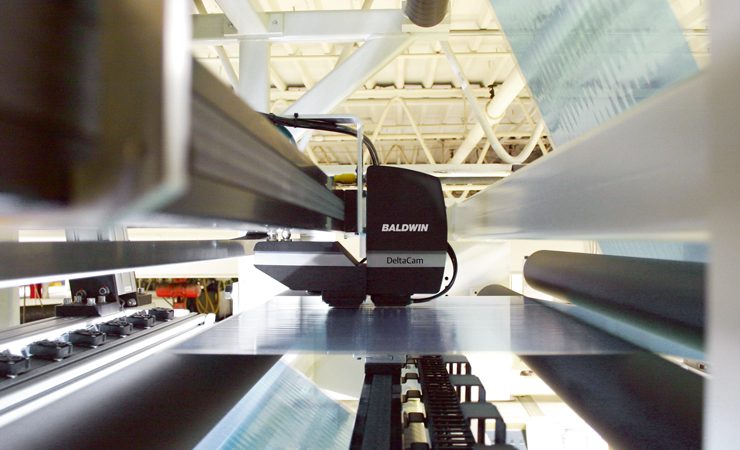Everything that happens in the flexo printing process is intended to achieve a printed product that a brand can use to sell its goods. It all counts for nothing if there is irregularity within the colour of that package or label, by Michal Lodej.
Colour variations can lead consumers to believe that a package’s contents are compromised, the product is expired, or the product is counterfeit. It is now essential that print production grows beyond colour management as an art form practiced by a few experts, to a more exact science managed by every single part of a print operation.
The uniformity of a brand’s packaging colour inspires recall, trust and loyalty among consumers – particularly important in these uncertain times in which we find ourselves, where familiarity brings comfort. While that trust is also shared within the supply chain, everyone from expert to layman can attest to how the most subtle variation in tone or shade can lead to the authenticity of a product being questioned.

Jan De Roeck, Esko director of marketing, industry relations and strategy
‘When it comes to brand recognition and value, colour consistency is so crucial that its importance cannot be overstated,’ said Jan De Roeck, Esko director of marketing, industry relations and strategy.
‘Over the last few years, we have seen increasing demand for shorter production runs as brands seek to grow market share with targeted campaigns, brand extensions and limited editions. Currently these are being replaced by an urgent need for long runs of core ranges,’ said Mr De Roeck. ‘The pressures on packaging printers have only been compounded by the coronavirus pandemic, creating additional challenges that need to be met in a timely and cost- effective manner, without any compromise on colour quality or consistency.’
Esko had developed technologically advanced, integrated solutions to ensure colour consistency across jobs, run after run, regardless of printing press, ink selection, pack application or substrate choice.
‘Esko developed its extended gamut printing solution, Equinox, specifically to enable faster printing with superb quality while lowering print costs,’ said Mr De Roeck. ‘Print solution providers can reduce downtime between jobs by converting spot colors to a fixed ink set, increasing their productivity. Not only that but expanded gamut printing covers both conventional and digital printing formats.
Working in combo
The combination of an CDI Crystal flexo imager and the XPS Crystal exposure unit offers a consolidated flexo platemaking workflow. With simultaneous main and back UV LED exposure, the XPS Crystal gives full control over the plate floor and printing dots ensuring the best quality flexo plates each and every time. The end result is that it is easier to move jobs between conventional and digital printing – something that a number of converters previously avoided due to now-redundant fears of prohibitive costs and technical complexity.
‘This combination solution delivers innumerable benefits to the prepress operator, streamlining the plate making process by halving the number of manual steps, as well as reducing errors by 50%. This ultimately leads to a reduction in costly plate waste. Not only that, but by reducing operator involvement in the process by as much as 73%, it also brings obvious productivity and efficiency benefits to the pre-press function.’
Increasingly, brand owners are using multiple print processes, substrates, packaging solutions, and print production locations—and expect absolute fidelity to brand colours across all platforms. Yet the demand for colour perfection is not limited to brand colours alone. Very slight colour shifts or inconsistencies in product imagery have a significant impact on consumers’ perception of the product.
Craig Du Mez, manager of global branding, PR & Communications, Baldwin Vision Systems, said, ‘It is becoming increasingly complicated to meet these quality and consistency challenges. In addition to rising brand owner demands, printers are faced with an increased pace and complexity of required technological innovation— at a time when profit margins are very tight. Add to that increasing requirements to meet new industry standards, an aging workforce, and the scarcity of true colour experts mean the challenges can be extremely daunting.’
Baldwin Vision Systems has introduced and continues to develop new colour management tools that directly address these challenges. Among the innovations are complete workflow solutions that are softwarebased (requiring no investment in hardware or press modifications), automation that simplifies the science of colour production (reducing reliance on a handful of colour experts who can’t be on every press for every shift at every plant), and inline colour measurement technology that is affordable and adaptable for even small printing and converting operations.
Mr Du Mez continued, ‘There is a clear and growing trend to move from periodic colour measurement with handheld spectrophotometers, to the more thorough and consistent inline spectral measurement. There is certainly a place for sampled handheld measurement. But continuous inline measurement catches problems through the entire print run, preventing you from throwing out product that is within colour tolerances, and ensuring that no outof-tolerance product is passed on to your customers.’
Data matters
At the heart of an effective, simplified, automated workflow is the seamless sharing of data—from customer inputs through all phases of a print operation. On the front end, customers might specify colour targets using data files, digital colour formula guides, colour books, ink samples, or actual printed product examples. A quality manager sets up the print job in the system (offline, saving setup time on-press), and data is immediately accessible to both the ink kitchen and the pressroom.
Instant sharing of job data, live colour measurement data, ink formulation data, ink inventory data, ink correction data, etc. ensures that pressrooms are spending more time producing top quality colour, and less time stopping and adjusting—or waiting for ink formulation.
Besides press operation improvements, all of this colour quality data is available on the back end to provide statistical proof of performance to the print buyer, decreasing rebates and liability concerns. Commonlyrun print jobs can be stored and quickly recalled, and next jobs can be set up remotely—even when the current job is running. Seamless sharing of data also dramatically reduces ink wastage and high storage costs by keeping records of batches, lots, additives and quantities back to individual containers.
Mr Du Mez, concluded, ‘There is an enormous opportunity for printers and converters who can adopt complete, simplified workflow solutions that increase press productivity, significantly reduce colour makeready and setup time, and reduce ink inventory and storage needs. Strong interinstrument agreement and a complete, connected workflow also allow printers to prove their colour quality to their customers. This will have a huge impact on profitability by decreasing liability exposure and rebates. Printers who fail to make this a priority will have difficulty surviving against competitors who do.’
Workflow innovations may not seem as splashy as the latest feature-laden smartphone, but there is some serious money to be made for printers who solve brand owners’ very costly colour quality and consistency issues.






